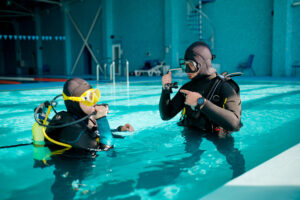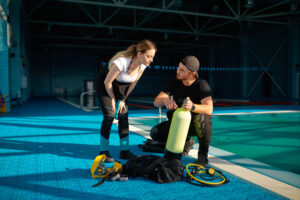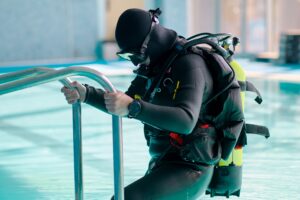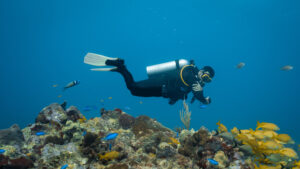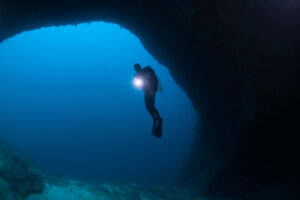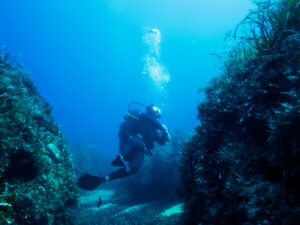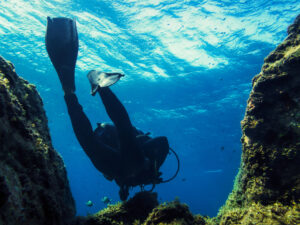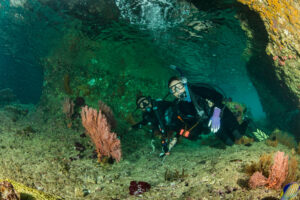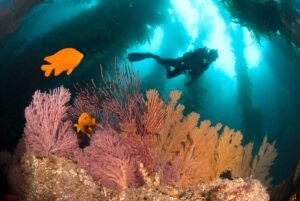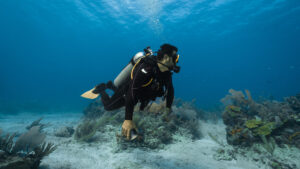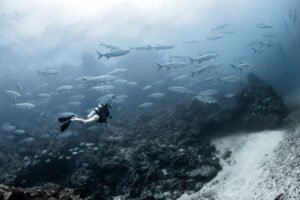What is a Diving Mask?
A diving mask is an essential piece of equipment for divers, enabling clear underwater vision and providing an air space between the diver’s eyes and the water. The mask ensures that both eyes can see in the same plane underwater, which is crucial for safe and enjoyable diving experiences. This entry explores the various types of scuba diving masks, their features, and how to use and maintain them.
Types of Diving Masks
Regular Masks
These masks cover the diver’s eyes and nose, creating an air pocket to prevent water from coming into contact with the face. Regular masks are the most common type of diving mask and come in various styles, such as single or dual-lens designs.
Full Face Masks
Full face masks cover the entire face, including the eyes, nose, and mouth. These masks are integrated with a regulator, allowing the diver to breathe through the mask without the need for a separate mouthpiece. Full face masks are often used by professional divers, such as underwater photographers and public safety divers.
Materials and Construction
Modern scuba diving masks are made from a combination of materials, including tempered glass, polycarbonate, and hypoallergenic silicone. The lenses are typically made from tempered glass or polycarbonate, both of which offer excellent clarity and impact resistance. Mask skirts are usually constructed from hypoallergenic silicone, which provides a comfortable and secure seal around the diver’s face.
Features to Consider in a Diving Mask
Lens Configuration: Scuba diving masks can have either single or dual lenses. Single-lens masks provide an uninterrupted field of view, while dual-lens masks may offer a greater range of customization, such as prescription lenses for divers with vision correction needs.
Low Volume Design
A low volume mask reduces the amount of air space between the diver’s face and the lenses, making it easier to equalize pressure during a dive. Low volume masks are also easier to clear of water in case of flooding.
Frameless Masks
Frameless masks eliminate the need for a rigid frame, providing a sleeker and more streamlined design. These masks typically have a lower profile and conform more closely to the diver’s face, offering increased comfort and reduced drag.
Purge Valves
Some masks feature a one-way purge valve, allowing divers to easily clear water from the mask by exhaling through the nose. This feature can be particularly useful for new divers or those who struggle with mask clearing techniques.
Visibility Enhancements
Some masks offer enhanced visibility features, such as ultra-clear glass or optical coatings that reduce glare and improve underwater color perception.
Diving Mask Fit and Adjustment
A properly fitting mask is essential for both comfort and safety while diving. To ensure a good fit, divers should try on several masks and perform a simple suction test by placing the mask on their face without using the strap, and inhaling through the nose. If the mask stays in place, it indicates a secure seal. Additionally, mask straps should be adjusted for a comfortable yet snug fit, without causing discomfort or distortion of the mask skirt.
Diving Mask Care and Maintenance
Proper care and maintenance of scuba diving masks are crucial to ensure their longevity and performance. Before each dive, masks should be treated with a defogging solution or saliva to prevent fogging. After diving, masks should be rinsed thoroughly with fresh water to remove salt and other debris. It is important to store masks in a cool, dry place, away from direct sunlight and sources of heat, which can damage the silicone skirt and other components.
Key Takeaways
A well-chosen and properly maintained scuba diving mask is crucial for a safe and enjoyable diving experience. By understanding the different types of masks, their features, and how to use and care for them, divers can ensure clear underwater vision and comfort throughout their dives. With numerous options available, from regular masks to full face masks, and features such as low volume designs and purge valves, there is a mask to suit every diver’s preferences and needs. By selecting the right mask, practicing proper mask fitting techniques, and following recommended care and maintenance procedures, divers can prolong the life of their masks and enhance their overall underwater experience.


